How to Measure Flour
A guide on how to measure flour properly and why the method you use can impact your baking results.
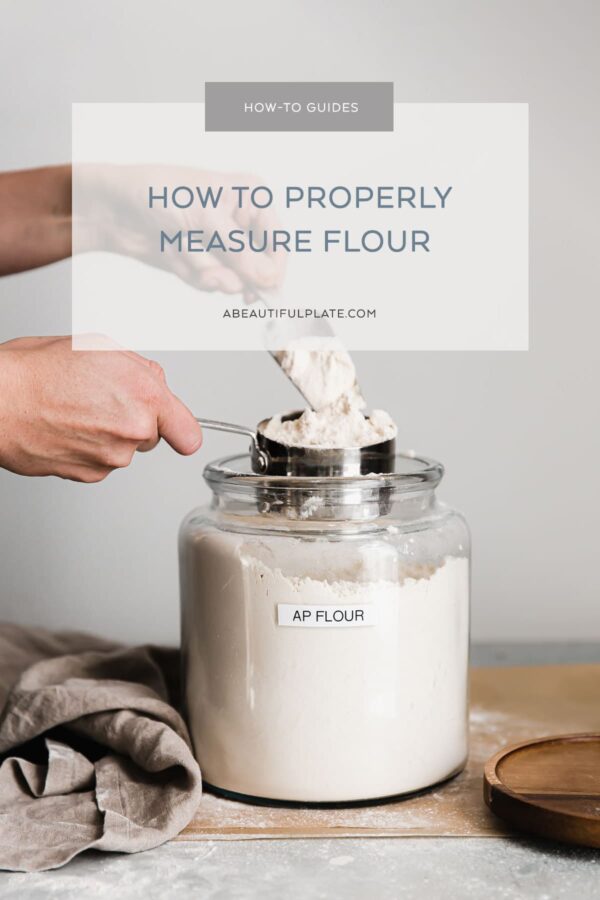
Since we’re in the thick of baking season, I wanted to cover an important topic today: how to measure flour!
If you’ve ever struggled with baking or inconsistent results, you’ll glean some powerful knowledge from today’s article. Why does the method matter? The way that you’re measuring flour has a direct impact on your baked goods.
Over measuring flour is very easy when measuring by volume (using traditional measuring cups, etc.). In fact, I would argue that it’s one of the most common baking mistakes that people make.
Imagine adding an extra 2/3 cup all purpose flour to your favorite roll cake, almond sugar cookies, or scone recipe. Would it impact the texture and outcome? Absolutely! You’ll most likely end up with dry, dense, and heavy baked goods.
Common Mistakes When Measuring Flour By Volume
It’s incredibly common and easy to over measure flour when using volume measurements (cups, etc.). These errors are amplified when preparing recipes that call for large flour quantities.
THE WRONG WAY TO MEASURE FLOUR:
- scooping measuring cups directly into a flour bag or storage container, particularly if the flour is packed down. This will compact the flour significantly.
- tapping or packing flour into a measuring cup.
*These methods will yield extremely inaccurate and inconsistent flour amounts that will impact the texture of your baked goods.
OTHER FACTORS:
- the brand and accuracy of your measuring cups.
- if you prefer volume measurements, I recommend investing in a good-quality set of measurement cups. Do not use mugs or decorative measuring cups for baking – they are not calibrated properly.
How to Properly Measure Flour by Volume
While the most accurate way to measure flour is to use metric weights, there is a correct and proper way to measure flour by volume. It’s called the fluff, spoon, and level method.
This method is the standard for most professional recipe writers, cookbooks, and food websites. It will produce the closest equivalent (+/- 5 grams) to a scaled cup of all purpose flour (120 grams).
When flour is measured incorrectly (see above), 1 cup of flour can easily be over measured by as much as 1/3 cup. If a recipe calls for 2 to 3 cups of flour, that is the equivalent of adding as much as 2/3 cup – 1 cup extra flour to a recipe.
THE CORRECT WAY TO MEASURE FLOUR BY VOLUME:
- Fluff, Spoon and Level Method: thoroughly aerate your flour with a spoon or scoop, spoon it into your measuring cup, then level evenly with the back of a knife or straight-edged utensil.
- For more guidance, see the step-by-step process photos below or this video lesson.
Flour will naturally settle and pack down after sitting on a grocery shelf or pantry.
Fluffing the flour thoroughly with a spoon or scoop prior to measuring ensures that it’s properly aerated. It should feel light and fluffy, not heavy or tightly packed.
STORAGE TIP: I always recommend transferring flour from the bag to a large airtight container. Flour will store longer and better, and be much easier to fluff and aerate in a container. My favorites are Glass Anchor Containers or OXO Pop Containers.
The Most Accurate Way to Measure Flour: Baking Scale
Can I make a confession? I despise measuring cups. While I’ll always include volume measurements in my baking recipes, I strongly encourage everyone to invest in a basic baking scale and use metric weights.
Metric weights are extremely accurate (and nearly fool-proof), which is why most pastry chefs prefer and recommend using them over volume measurements.
My baking conversion for standard all purpose flour is: 1 cup = 120 grams. This is fairly standard, but can vary slightly from baker to baker. If a cookbook, website, or chef provides metric weights, use them. You’ll get better results!
The best part about using a scale? 120 grams will always be 120 grams.
BENEFITS OF USING A BAKING SCALE:
- extremely accurate; consistent results
- time-saving
- less clean up and dishes
- recipes can be easily scaled up or down; no messy fractions
- baking ratios are easy to use!
HOW TO WEIGH FLOUR:
- Place your container on your baking scale.
- Press the ‘TARE’ button – this zero’s out the scale, which negates the weight of whatever container or vessel you are measuring (or whatever other ingredients are in the container).
- Add flour into the bowl until the weight matches the metric weight (1 cup = 120 grams; 2 cups = 240 grams, etc.). That’s it!
If you enjoyed this post, be sure to check out these other baking and cooking science articles:

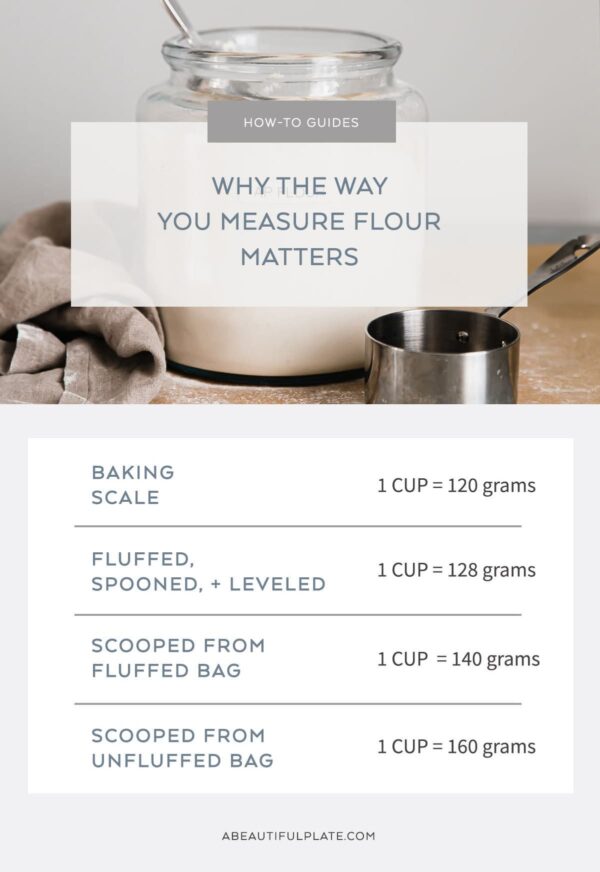
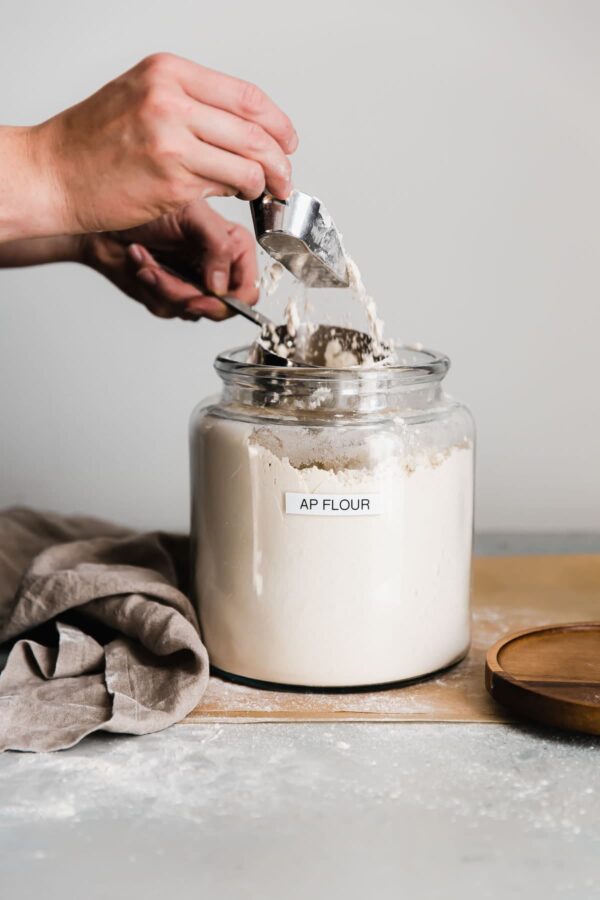
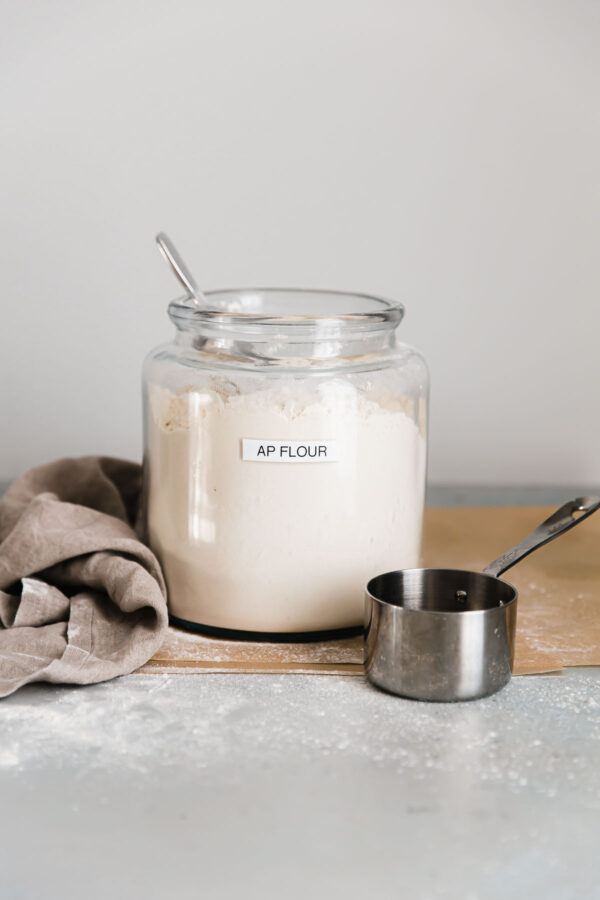
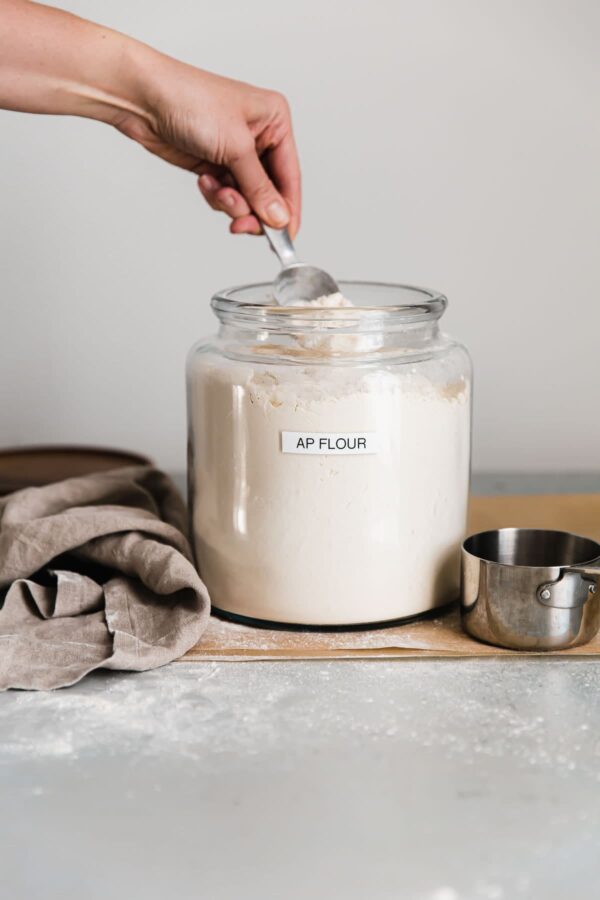
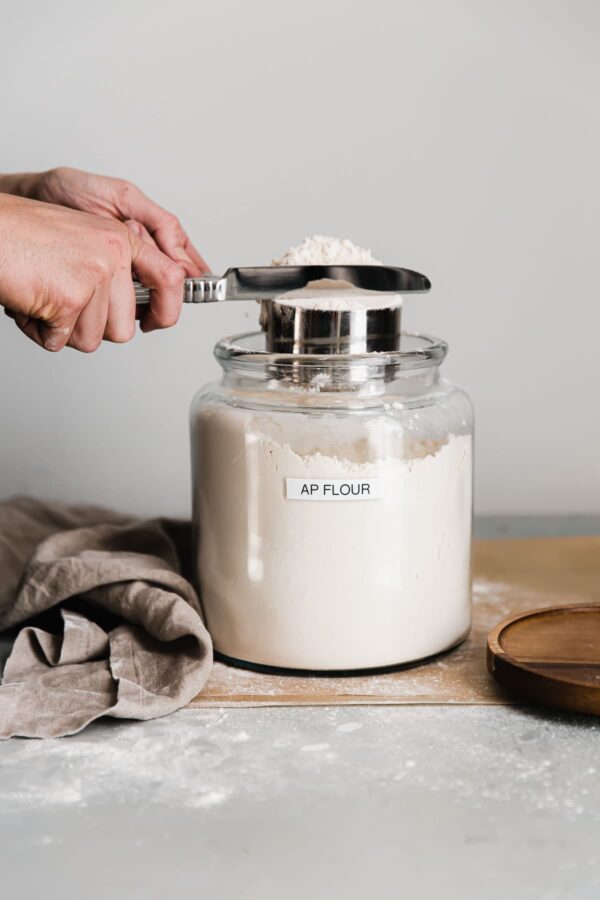
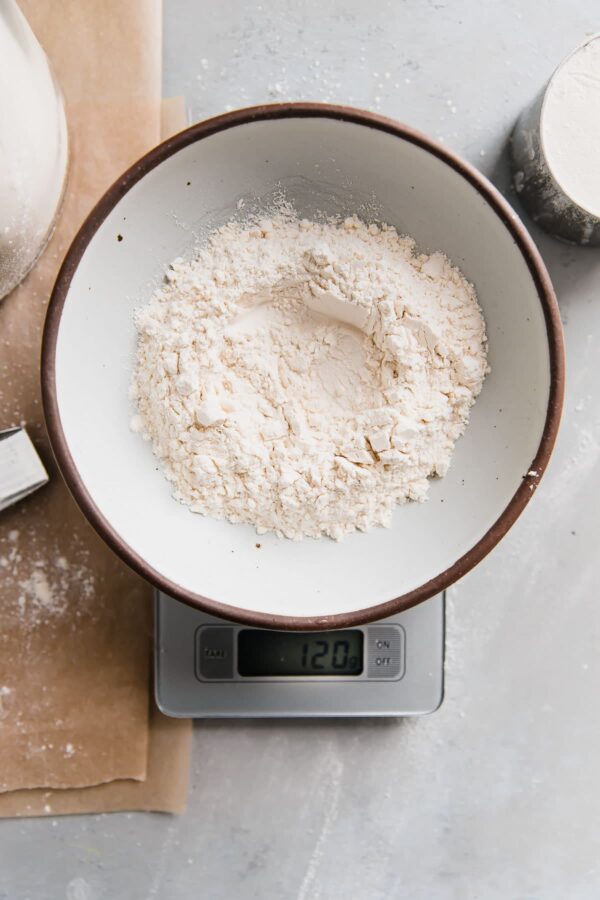
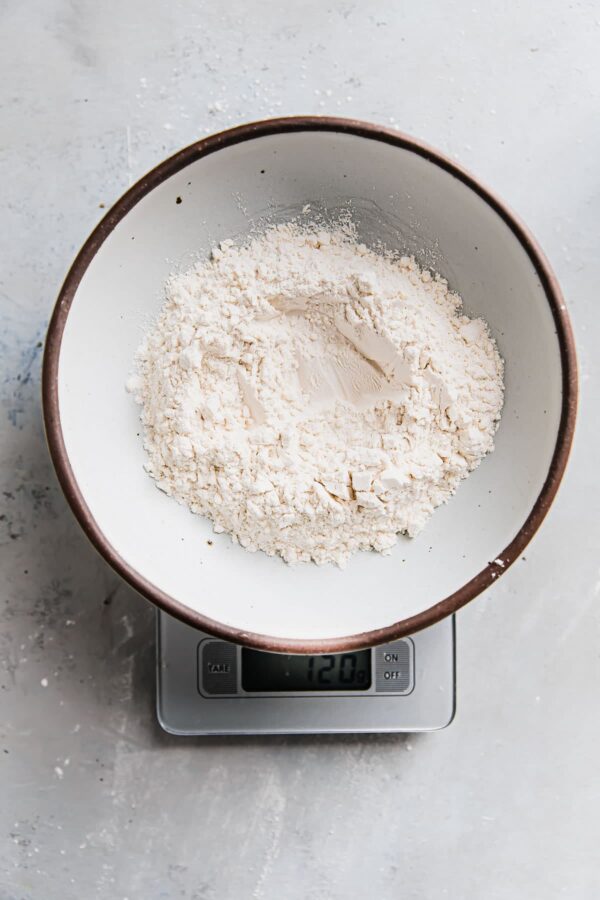
One Comment on “How to Measure Flour”
Excellent explanation of how to measure flour properly. Will definitely be focusing on this when I bake.
Oops! Maybe that’s why my biscuits were awful!